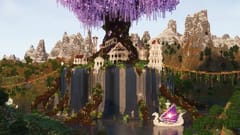
The Art of Destruction: Diablo IV's Cinematic Visuals
Posted by Steve Davies October 6th, 2023
When it comes to the all-encompassing world of video games, very few titles attract as much expectation and anticipation as does the Diablo series. This game franchise is renowned for being a leader of action RPGs with its dark and deep world. The cinematic beauty of the game has taken front stage with the forthcoming release of DiabloIV, enthralling fans and promising an unmatched experience.
A Symphony of Destruction: Graphic and Story Interaction
With each edition of the Diablo series published by Blizzard Entertainment, the world’s premier creative powerhouse, visual story-telling in computer games reaches new heights. This commitment of Diablo IV goes to a higher level through integrating advanced graphics technology and giving special emphasis on detail. This leads to a filmic masterpiece throwing the player in a world where apocalypse is imminent, with angels grappling against devils permanently.
Rendering the Abyss: A Tapestry of Devastation
The cinematic quality of Diablo IV proves successful when comes portraying the extent of devastation. The cities fall apart while the landscapes are torn off, and the air becomes filled by a threat of an invasive demon. The game uses cutting-edge methods to render a world that ranges from shadowy reflections of flames emitting from crumbling buildings to smokey vapors hanging between them. Through this, lighting within the surroundings moves along with the changing moods in a manner that results into an impressively immersive visual sight that is at the same time ghostly..
Details in the Desolation: Subtlety Amidst Chaos
Beyond grand scenes of destruction, it's the subtle details that define Diablo IV's cinematic experience. Character animations convey weight and urgency, adding authenticity to the chaos. The facial expressions of characters tell a story beyond words, capturing the anguish of townsfolk or the determination of a hero facing insurmountable odds. Blizzard's commitment to storytelling through animation is evident, creating a world that resonates emotionally with players.
Seamless Symphony: Transitioning Between Realms
Diablo IV seamlessly transitions between gameplay and cinematic sequences, blurring the lines between player agency and scripted narrative. The shift from controlling a character in the midst of combat to watching a cinematic unfold is so smooth that it creates a cohesive experience, keeping players on the edge of their seats. The interplay between interactive elements and scripted storytelling adds layers of immersion to the overall gaming experience.
Harmony in Discord: The Power of Musical Accompaniment
The haunting musical score of Diablo IV further amplifies the impact of its cinematic visuals. Ranging from ominous chants to thunderous orchestral arrangements, the composition serves as a perfect accompaniment to the unfolding apocalypse. The music doesn't merely underscore the action; it becomes an integral part of the narrative, heightening the emotional resonance of key moments and adding depth to the overall experience.
Worlds as Characters: Crafting Environments with Purpose
Beyond the spectacle, Diablo IV's cinematic visuals are a masterclass in world-building. The environments are not mere backdrops; they are characters with stories of their own. From eerie swamps to foreboding castles, each locale contributes to the rich tapestry of the Diablo universe, creating a cohesive and immersive narrative experience.
The Art of Destruction: A Defining Legacy
In conclusion, Diablo IV's cinematic visuals are more than mere eye candy; they are a testament to the evolving artistry within the gaming industry. Blizzard Entertainment has not only embraced cutting-edge technology but has wielded it with finesse, crafting a world on the brink of annihilation where every visual element serves a purpose. As the release of Diablo IV approaches, it is evident that the game's cinematic visuals will be a defining aspect, etching the experience into the annals of gaming history as a masterclass in the art of destruction.





